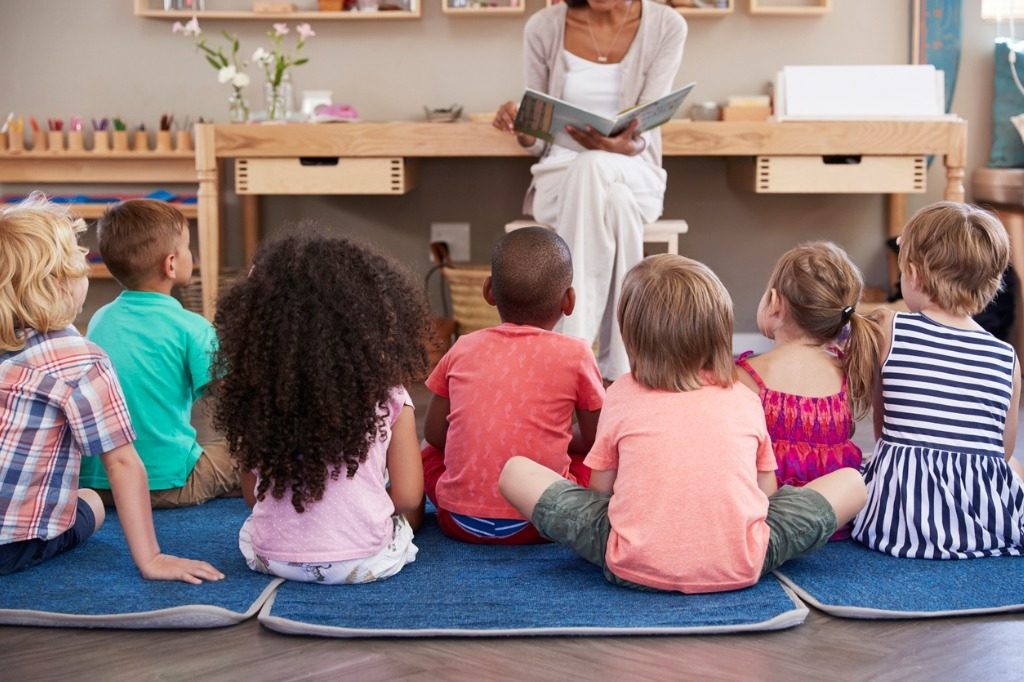At LEARNS.EDU.VN, we understand that what comes after an early learner‘s initial educational experiences is crucial for their long-term success. This involves ensuring a smooth transition and continuous development through high-quality schooling and ongoing support, fostering essential skills and sustained academic growth. Building upon the foundations laid in early childhood education requires a strategic approach that considers personalized learning, advanced education, and the development of critical thinking skills.
1. Understanding the Early Learning Foundation
Early childhood education lays the groundwork for future academic and personal success. It focuses on developing essential skills such as literacy, numeracy, social-emotional intelligence, and problem-solving. These foundational skills are vital for children as they progress through their educational journey.
1.1 The Importance of Early Childhood Education
Early learning programs provide children with a head start by fostering cognitive, social, and emotional development. Research consistently shows that children who attend quality early learning programs are better prepared for school, both academically and behaviorally. For example, a study by the Foundation for Child Development found that children in high-quality early childhood programs demonstrated stronger language skills and social competence compared to their peers who did not attend such programs.
1.2 Key Skills Developed in Early Learning
During early learning, children develop a range of skills that are crucial for future success. These include:
- Literacy Skills: Recognizing letters, understanding sounds, and developing pre-reading skills.
- Numeracy Skills: Counting, understanding basic mathematical concepts, and problem-solving.
- Social-Emotional Skills: Learning to interact with others, understanding emotions, and developing empathy.
- Cognitive Skills: Problem-solving, critical thinking, and creativity.
1.3 How Early Learning Programs Prepare Children for School
Early learning programs use various methods to prepare children for school, including play-based learning, structured activities, and individualized attention. These programs aim to create a stimulating and supportive environment where children can learn and grow at their own pace.
| Aspect | Description |
|---|---|
| Play-Based Learning | Children learn through play, which helps them develop social skills, problem-solving abilities, and creativity. Activities include imaginative play, games, and hands-on exploration. |
| Structured Activities | Structured activities such as circle time, story time, and art projects help children develop specific skills and knowledge. These activities are designed to be engaging and age-appropriate. |
| Individualized Attention | Teachers provide individualized attention to each child, helping them to address their specific needs and interests. This approach ensures that all children receive the support they need to succeed. |
 Teacher reading to children at story time
Teacher reading to children at story time
2. The Transition to Elementary School
The transition from early learning to elementary school is a critical period in a child’s educational journey. It is essential to ensure that children continue to receive high-quality education and support to maintain the gains they made in early learning.
2.1 Maintaining the “Preschool Boost”
Research has shown that the benefits of early learning can fade over time if children do not continue to receive high-quality education in elementary school. This phenomenon is known as the “preschool fade-out.”
A study by the Brookings Institution found that the academic gains made in preschool were sustained when children transitioned to high-quality elementary schools. This highlights the importance of ensuring that children have access to excellent educational opportunities throughout their schooling.
2.2 Characteristics of High-Quality Elementary Schools
High-quality elementary schools share several key characteristics, including:
- Effective Teachers: Teachers who are well-trained, experienced, and passionate about teaching.
- Rigorous Curriculum: A curriculum that is challenging, engaging, and aligned with state standards.
- Supportive Environment: A school environment that is safe, welcoming, and inclusive.
- Parental Involvement: Strong parental involvement in the school community.
2.3 Strategies for a Successful Transition
Parents and educators can use several strategies to ensure a successful transition from early learning to elementary school. These include:
- Communication: Open communication between early learning providers, elementary school teachers, and parents.
- Familiarization: Visits to the elementary school and opportunities for children to meet their teachers and classmates.
- Continuity: Ensuring that the skills and knowledge learned in early learning are reinforced in elementary school.
- Support: Providing children with the emotional and academic support they need to succeed.
3. The Role of Parents and Caregivers
Parents and caregivers play a vital role in supporting children’s educational journey. Their involvement and support can significantly impact a child’s academic success and overall well-being.
3.1 Creating a Supportive Home Environment
A supportive home environment can enhance a child’s learning and development. This includes:
- Encouraging Reading: Reading aloud to children and providing them with access to books and other reading materials.
- Promoting Curiosity: Encouraging children to ask questions and explore their interests.
- Providing Structure: Establishing routines and providing a consistent and predictable environment.
- Offering Praise and Encouragement: Praising children for their efforts and encouraging them to persevere through challenges.
3.2 Engaging with the School Community
Engaging with the school community can help parents stay informed about their child’s progress and provide support to the school. This includes:
- Attending School Events: Attending school events such as parent-teacher conferences, school concerts, and fundraising events.
- Volunteering: Volunteering in the classroom or at school events.
- Communicating with Teachers: Maintaining open communication with teachers and addressing any concerns or questions.
- Joining Parent Organizations: Joining parent organizations such as the Parent-Teacher Association (PTA).
3.3 Supporting Learning at Home
Parents can support learning at home by:
- Providing a Dedicated Study Space: Creating a quiet and comfortable space for children to study.
- Assisting with Homework: Helping children with their homework and providing guidance and support.
- Encouraging Extracurricular Activities: Encouraging children to participate in extracurricular activities such as sports, music, and art.
- Limiting Screen Time: Limiting screen time and encouraging children to engage in other activities such as reading, playing, and spending time outdoors.
4. Advanced Learning Opportunities
As children progress through their education, they may benefit from advanced learning opportunities such as gifted and talented programs, advanced placement (AP) courses, and dual enrollment programs.
4.1 Gifted and Talented Programs
Gifted and talented programs are designed to meet the unique needs of students who demonstrate exceptional abilities in one or more areas. These programs provide students with challenging and stimulating learning experiences that are tailored to their individual needs and interests.
4.2 Advanced Placement (AP) Courses
Advanced Placement (AP) courses are college-level courses that are offered in high school. These courses provide students with the opportunity to earn college credit while still in high school. AP courses can help students develop critical thinking skills, improve their writing abilities, and prepare for college-level coursework.
4.3 Dual Enrollment Programs
Dual enrollment programs allow high school students to take college courses and earn college credit while still in high school. These programs can help students get a head start on their college education and save money on tuition.
5. Personalized Learning Approaches
Personalized learning approaches are designed to meet the individual needs of each student. These approaches recognize that students learn at different paces and have different learning styles.
5.1 Differentiated Instruction
Differentiated instruction involves tailoring instruction to meet the individual needs of each student. This may include modifying the content, process, or product of instruction to match the student’s learning style, interests, and abilities.
5.2 Individualized Education Programs (IEPs)
Individualized Education Programs (IEPs) are developed for students with disabilities. These programs outline the specific services and supports that the student needs to succeed in school. IEPs are developed by a team of professionals, including teachers, parents, and other specialists.
5.3 Adaptive Learning Technologies
Adaptive learning technologies use data to personalize the learning experience for each student. These technologies can track student progress and adjust the difficulty level of the material to match the student’s abilities.
6. Developing Critical Thinking Skills
Critical thinking skills are essential for success in the 21st century. These skills enable students to analyze information, solve problems, and make informed decisions.
6.1 Encouraging Inquiry-Based Learning
Inquiry-based learning involves asking students to investigate questions and solve problems through research, experimentation, and collaboration. This approach encourages students to think critically and develop their problem-solving skills.
6.2 Promoting Problem-Solving Activities
Problem-solving activities challenge students to apply their knowledge and skills to solve real-world problems. These activities can help students develop critical thinking skills, creativity, and collaboration skills.
6.3 Fostering Collaboration and Communication
Collaboration and communication are essential skills for success in the modern workplace. Encouraging students to work together on projects and communicate their ideas effectively can help them develop these skills.
7. Social-Emotional Learning (SEL)
Social-Emotional Learning (SEL) involves developing students’ self-awareness, self-management, social awareness, relationship skills, and responsible decision-making. SEL can help students improve their academic performance, build positive relationships, and develop emotional resilience.
7.1 Integrating SEL into the Curriculum
SEL can be integrated into the curriculum by:
- Teaching Social Skills: Explicitly teaching social skills such as empathy, communication, and conflict resolution.
- Creating a Supportive Classroom Environment: Creating a classroom environment that is safe, welcoming, and inclusive.
- Using Literature to Teach SEL: Using literature to explore themes of empathy, compassion, and social justice.
- Implementing SEL Programs: Implementing evidence-based SEL programs such as Second Step and RULER.
7.2 Promoting Mindfulness and Self-Regulation
Mindfulness and self-regulation practices can help students manage their emotions, reduce stress, and improve their focus. These practices can be taught through activities such as meditation, deep breathing exercises, and yoga.
7.3 Fostering Empathy and Compassion
Fostering empathy and compassion can help students develop positive relationships and become more engaged citizens. This can be done through activities such as service-learning projects, community involvement, and discussions about social issues.
8. The Importance of Mentorship and Role Models
Mentorship and role models can play a significant role in shaping a child’s educational journey. Mentors can provide guidance, support, and encouragement, while role models can inspire children to achieve their goals.
8.1 Connecting Students with Mentors
Connecting students with mentors can provide them with valuable support and guidance. Mentors can help students navigate challenges, set goals, and develop their skills and talents.
8.2 Identifying Positive Role Models
Identifying positive role models can inspire children to achieve their goals and pursue their dreams. Role models can be found in various fields, including education, business, arts, and sports.
8.3 Encouraging Peer Mentoring
Encouraging peer mentoring can help students develop leadership skills and provide support to their peers. Peer mentors can provide guidance and encouragement to younger students or students who are struggling academically or socially.
9. Technology Integration in Education
Technology is transforming education and providing new opportunities for learning and engagement. Integrating technology effectively into the classroom can enhance instruction, personalize learning, and prepare students for the future.
9.1 Using Educational Software and Apps
Educational software and apps can provide students with interactive and engaging learning experiences. These tools can help students master new concepts, practice skills, and receive personalized feedback.
9.2 Implementing Blended Learning Models
Blended learning models combine online and in-person instruction. These models can provide students with greater flexibility and control over their learning, while also allowing them to benefit from the support and guidance of a teacher.
9.3 Promoting Digital Literacy Skills
Digital literacy skills are essential for success in the 21st century. These skills include the ability to find, evaluate, and use information effectively, as well as the ability to communicate and collaborate online.
10. Preparing for Higher Education and Beyond
Preparing students for higher education and beyond requires a focus on developing academic skills, career readiness, and life skills.
10.1 Developing Academic Skills
Developing strong academic skills is essential for success in higher education. This includes skills such as reading comprehension, writing, critical thinking, and problem-solving.
10.2 Fostering Career Readiness
Fostering career readiness involves helping students explore their interests, develop their skills, and prepare for the world of work. This can be done through activities such as career counseling, internships, and job shadowing.
10.3 Cultivating Life Skills
Cultivating life skills such as time management, financial literacy, and communication is essential for success in life. These skills can help students manage their personal lives, build positive relationships, and achieve their goals.
Key Takeaways for Parents and Educators:
- Prioritize high-quality education at every stage: From early learning to elementary school and beyond, ensure access to effective teachers and a rigorous curriculum.
- Foster a supportive learning environment: Create a home and school environment that encourages curiosity, provides structure, and offers praise and encouragement.
- Embrace personalized learning: Recognize that each child learns differently and tailor instruction to meet their individual needs.
- Develop critical thinking skills: Encourage inquiry-based learning and problem-solving activities to help students analyze information and make informed decisions.
- Integrate social-emotional learning: Help students develop self-awareness, empathy, and positive relationships through SEL programs and practices.
- Connect students with mentors and role models: Provide guidance, support, and inspiration to help children achieve their goals.
- Leverage technology effectively: Use educational software, blended learning models, and digital literacy programs to enhance instruction and personalize learning.
- Prepare for higher education and beyond: Focus on developing academic skills, career readiness, and life skills to set students up for success in college and the workforce.
By focusing on these key areas, educators and parents can ensure that early learners continue to thrive and reach their full potential. LEARNS.EDU.VN is dedicated to providing resources and support to help you navigate this journey.
| Aspect | Description |
|---|---|
| Early Childhood Education | Focuses on developing foundational skills in literacy, numeracy, and social-emotional intelligence. High-quality programs prepare children for school by fostering cognitive, social, and emotional development. |
| Transition to Elementary School | Ensuring a smooth transition by maintaining high-quality education and support. Characteristics include effective teachers, a rigorous curriculum, a supportive environment, and parental involvement. Strategies include communication, familiarization, continuity, and emotional and academic support. |
| Parental Involvement | Playing a vital role in supporting children’s education. Creating a supportive home environment involves encouraging reading, promoting curiosity, providing structure, and offering praise. Engaging with the school community through attendance, volunteering, communication, and joining parent organizations. Supporting learning at home with dedicated study space, homework assistance, extracurricular activities, and limited screen time. |
| Advanced Learning | Offering opportunities like gifted programs, AP courses, and dual enrollment to meet unique needs and provide challenging experiences. |
| Personalized Learning | Tailoring instruction through differentiated instruction, IEPs, and adaptive learning technologies to meet individual student needs. |
| Critical Thinking | Developing skills through inquiry-based learning, problem-solving activities, and fostering collaboration and communication. |
| Social-Emotional Learning | Integrating SEL into the curriculum, promoting mindfulness and self-regulation, and fostering empathy and compassion to improve academic performance and build positive relationships. |
| Mentorship & Role Models | Connecting students with mentors, identifying positive role models, and encouraging peer mentoring to provide guidance and support. |
| Technology Integration | Utilizing educational software and apps, implementing blended learning models, and promoting digital literacy skills to enhance instruction and personalize learning. |
| Preparing for Higher Ed. | Focusing on developing academic skills, fostering career readiness, and cultivating life skills for success in college and beyond. |
FAQ: What Comes After an Early Learner?
1. What is the most important thing to focus on after early learning?
The most important thing is ensuring a seamless transition to a high-quality elementary school that continues to build upon the foundational skills learned in early childhood education.
2. How can parents support their child’s education after early learning?
Parents can support their child by creating a supportive home environment, engaging with the school community, and assisting with homework and other learning activities.
3. What are some signs that a child is struggling after transitioning from early learning to elementary school?
Signs of struggle can include decreased interest in learning, difficulty completing assignments, and changes in behavior or mood.
4. How can schools help students who are struggling after early learning?
Schools can provide additional support through tutoring, individualized instruction, and social-emotional learning programs.
5. What is personalized learning, and how can it benefit students after early learning?
Personalized learning involves tailoring instruction to meet the individual needs of each student. This can help students learn at their own pace and develop their unique skills and talents.
6. Why are critical thinking skills important after early learning?
Critical thinking skills enable students to analyze information, solve problems, and make informed decisions, which are essential for success in school and in life.
7. What role does technology play in education after early learning?
Technology can enhance instruction, personalize learning, and provide students with access to a wide range of resources and learning opportunities.
8. How can students prepare for higher education after elementary and secondary school?
Students can prepare for higher education by developing strong academic skills, exploring their interests, and gaining experience through internships and other career-related activities.
9. What are some key life skills that students should develop after early learning?
Key life skills include time management, financial literacy, communication, and problem-solving.
10. Where can I find more resources and support for my child’s education after early learning?
LEARNS.EDU.VN offers a variety of resources and support for parents and educators, including articles, guides, and online courses.
Are you ready to take the next step in your educational journey? Visit LEARNS.EDU.VN today to explore our comprehensive resources and discover how we can help you or your child succeed. Contact us at 123 Education Way, Learnville, CA 90210, United States, or reach out via WhatsApp at +1 555-555-1212. Let learns.edu.vn be your partner in lifelong learning and achievement.

